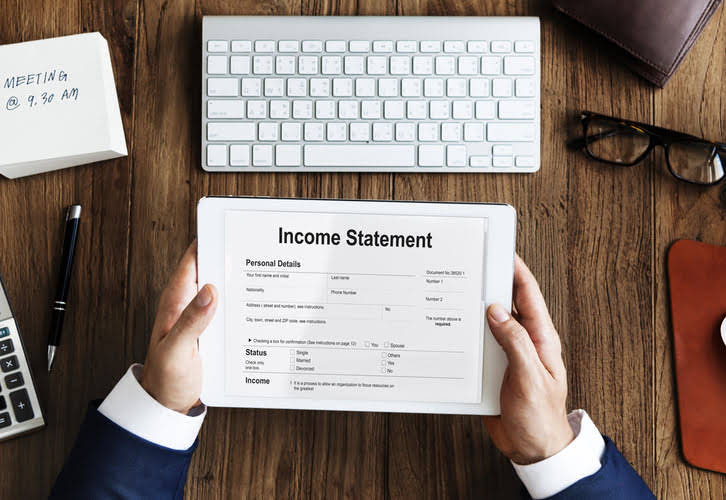
Inversion gain is also reported under code AP because your taxable income and alternative minimum taxable income can’t https://www.bookstime.com/articles/what-is-a-sales-invoice be less than the inversion gain. The partnership will identify the type of credit and any other information you need to figure these rental credits. Combine the expenditures (for Form 3468 reporting) from box 15, code E, and box 20, code D. The corporation will report your share of nonqualified withdrawals from a CCF. Include the tax and interest on Schedule 2 (Form 1040), line 21. In the space to the left of line 21, enter the amount of tax and interest and “CCF.” See Pub.
- If the amount isn’t a passive activity deduction, report it on Schedule E (Form 1040), line 28, column (j), after applying the basis and at-risk limitations on losses.
- However, the income (loss) in box 2 isn’t from a passive activity if you were a real estate professional (defined earlier) and you materially participated in the activity.
- If you don’t make the election, report the section 59(e)(2) expenditures on Schedule E (Form 1040), line 28, and figure the resulting adjustment or tax preference item (see Form 6251, Alternative Minimum Tax—Individuals).
- The partnership will identify the type of credit and any other information you need to figure these rental credits.
- Obviously, if you’re an active member in a partnership or other business that regularly issues K-1s it will come as no surprise when you receive one each year.
Schedule K-1: Partner’s Share of Income, Deductions, Credits, etc.

If the corporation claims a qualified conservation contribution, the corporation will provide you with your relevant basis. The corporation may need information from you to calculate relevant basis. The corporation will provide your share of its section 951(a)(1)(B) inclusions.
- Taking in enough vitamin K2 helps lower the risk of vascular damage because it activates matrix GLA protein, which can stop the deposits of calcium on arterial walls.
- See section 175 for limitations on the amount you are allowed to deduct.
- They include Schedule K-1 information about each shareholder’s share of income, losses, deductions, and credits.
- 7 Investors should carefully consider the investment objectives, risks, charges and expenses of the Yieldstreet Alternative Income Fund before investing.
- Generally, where you report this amount on Form 1040 or 1040-SR depends on whether the amount is from an activity that is a passive activity to you.
- Enterprise Products Partners (EPD -0.57%) is one of the top MLPs.
What is Schedule K1 (Form ?
- Here you’ll report your share of the partnership’s profits, loss, and capital.
- The partnership will report your share of nonqualified withdrawals from a CCF.
- The basis of your loans to the corporation is generally the balance the corporation owes you, adjusted for any reductions and restorations of loan basis (see the instructions for box 16, code E).
- In general, a partner’s adjusted basis is determined under the principles of subchapter K, including sections 705, 722, 733, and 742.
Schedule K-1 is similar to Form 1099, in that it reports dividends, interest, and other annual returns from an investment. Whether you receive a K-1 or a Form 1099 what does k1 mean depends on the investment. Master limited partnerships (MLPs), real estate limited partnerships (RELPS) and certain exchange-traded funds (ETFs) are all types of investments that routinely issue K-1s. The S corporation will provide the information you need to figure your deduction. You will use one of these two forms to figure your QBI deduction.

S Corporation K-1 Form
If you have net income (loss), deductions, or credits from any of the following activities, treat such amounts as nonpassive and report them as indicated in these instructions. If you have an overall gain from a PTP, the net gain is nonpassive income. In addition, the nonpassive income is included in investment income to figure your investment interest expense deduction. Generally, specific limitations apply before the at-risk and passive loss limitations.

Risks and Side Effects

Don’t file Form 8283 unless the total claimed deduction for all contributed items of property exceeds https://www.facebook.com/BooksTimeInc/ $500. If there was a gain (loss) from a casualty or theft to property not used in a trade or business or for income-producing purposes, the partnership will provide you with the information you need to complete Form 4684. This represents the amount of loss or deduction items you’re allowed to report on your return from the partnership this tax year, as limited by your basis. This amount may not match the amount reported on your current year Schedule K-1.
What is a Schedule K-1 Tax Form?
- When the partner receives their Schedule K-1, it states that their share of business profits for the year was $15,000.
- Brandon’s personal real estate portfolio consists of 12 properties / 24 units and Brandon has stakes in rental syndications across the U.S.
- If the corporation had more than one trade or business activity, it will attach a statement identifying the income or loss from each activity.
- The partnership will show the portion of income or deduction items allocated to you under section 704(c).
- Whether that means they need to be issued by then, or to actually be in taxpayers’ hands by that date, seems open to interpretation.
- If you do itemize deductions, enter on Schedule A (Form 1040), line 1, any amounts not deducted on Schedule 1 (Form 1040), line 17.
A K-1 is a tax form distributed by many partnerships, S-Corps, estates, and trusts. If you are a general or limited partner of a partnership, a shareholder in an S-Corp, or the beneficiary of an estate or trust, you’re likely to receive a K-1. Form K-1, Partner’s Share of Income, Deductions, Credits, etc. is a tax form issued by a partnership to its partners. An S corporation can also issue Schedule K-1s to its shareholders, a limited liability company (LLCs) to its members, or an estate or trust to its beneficiaries. Employers and banks know how much they’ve paid out to people by January 1st, so the 1099 and W-2 deadlines are reasonable. If you have a small business where a K-1 would be issued then you may be waiting for your K-1 before you file your personal taxes.